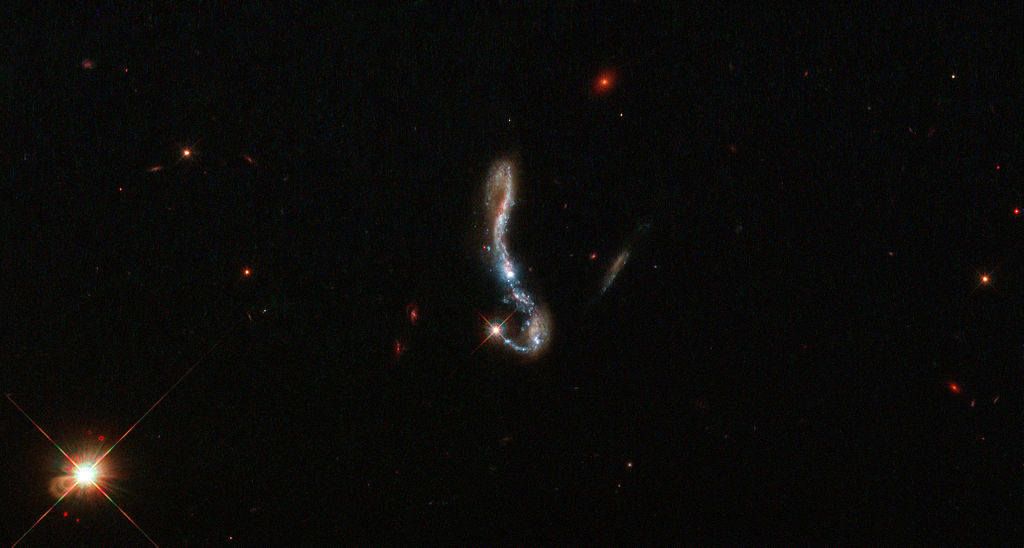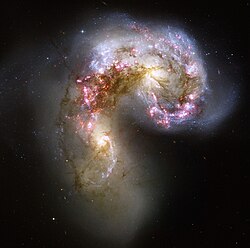Light and dust in a nearby starburst galaxy
One way in which astronomers probe the nature and structure of galaxies like this is by observing the behaviour of their dust and gas components; in particular, the Lyman-alpha emission. This occurs when electrons within a hydrogen atom fall from a higher energy level to a lower one, emitting light as they do so. This emission is interesting because this light leaves its host galaxy only after extensive scattering in the nearby gas — meaning that this light can be used as a pretty direct probe of what a galaxy is made up of.
The study of this Lyman-alpha emission is common in very distant galaxies, but now a study named LARS (Lyman Alpha Reference Sample) [1] is investigating the same effect in galaxies that are closer by. Astronomers chose fourteen galaxies, including this one, and used spectroscopy and imaging to see what was happening within them. They found that these Lyman-alpha photons can travel much further if a galaxy has less dust — meaning that we can use this emission to infer how dusty the source galaxy is.
The LARS study relies heavily on the high resolving power of Hubble. When Hubble is decommissioned, no telescope will be able to make observations like this in the far ultraviolet part of the spectrum — meaning that small, glittering galaxies imaged and probed by studies like LARS may give us some of the most detailed data we have to work with for some time to come.Relevantní obrázky
Relevantní články
Hvězdotvorná galaxieHvězdotvorná galaxie nebo galaxie s překotnou tvorbou hvězd je taková galaxie, ve které vznikají hvězdy ve výjimečně velkém rozsahu, pokud se porovná s jejím dlouhodobým průměrem tvorby hvězd, případně s úrovní tvorby hvězd ve většině jiných galaxií. Například v Mléčné dráze hvězdy vznikají rychlostí přibližně 3 hmotnosti Slunce za rok, ale hvězdotvorné galaxie mohou hvězdy vytvářet řádově více než 100krát rychleji. Rychlost tvorby hvězd je potom tak velká, že galaxie spotřebuje zásoby plynu, ze kterého hvězdy vznikají, za dobu mnohem kratší, než je stáří galaxie. Je to tedy pouze přechodné období, které během vývoje galaxie trvá pouze poměrně krátkou dobu. Většina hvězdotvorných galaxií se právě slučuje s jinou galaxií nebo s ní podstupuje blízké setkání. Příkladem hvězdotvorných galaxií jsou Messier 82, Tykadla (NGC 4038/NGC 4039) a IC 10. .. pokračovat ve čtení





